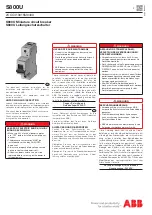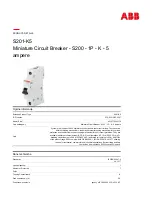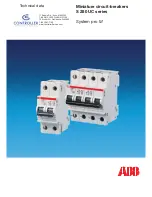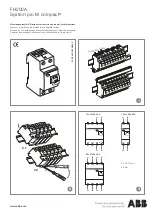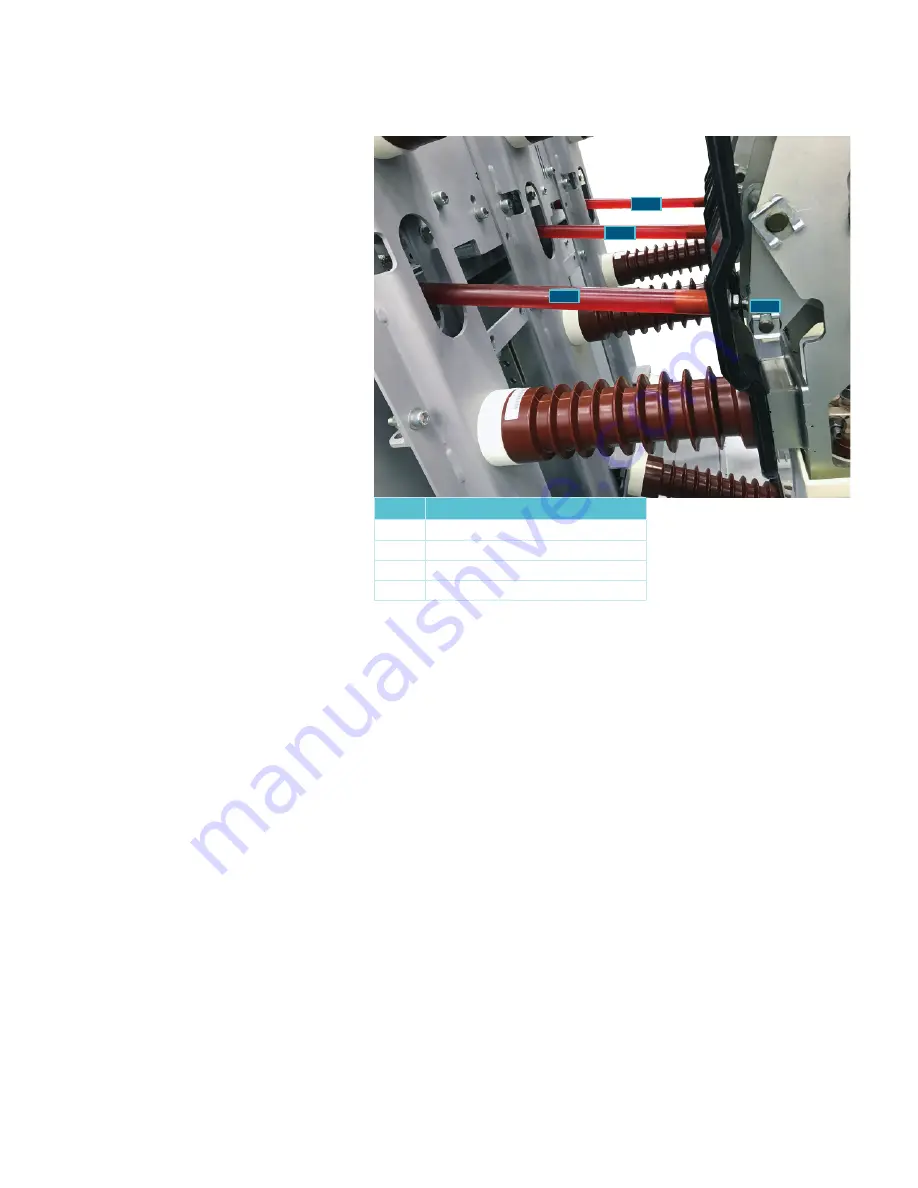
27
Instruction manual
| Types SDV-R and SDV-R-AR distribution circuit breakers
When a circuit breaker closing command is
initiated, the closing spring (79.0), that was
previously charged by hand or by the motor,
actuates the moving contacts through the
drive main shafts (68.0), levers (25.1, 25.2
and 25.3), insulating connecting rods
(16.0), angular levers and contact pressure
springs (19.0 and 18.0).
The forces that occur when the action of the
insulating connecting rod (16.0) is
converted into the action of the moving
contact along the axis of the vacuum
interrupter are absorbed by the guide link,
that pivots on the pole bottom and the eye
bolt. During closing, the opening spring
(21.0) and the contact pressure springs
(18.0 and 19.0) are charged and latched by
pawl. The closing spring (79.0) of the
motor-operated circuit breaker is recharged
immediately after closing.
In the circuit breaker closed state, the
necessary contact pressure is maintained by
the circuit breaker contact pressure springs
(18.0) and the atmospheric pressure. The
contact pressure spring automatically
compensates for arc erosion, which is very
small. In this state, the ground switch
vacuum interrupter contacts are held open.
When an opening command is given, the
energy stored in the opening and contact
pressure springs is released by pawl (83.0).
The residual force of the opening spring
(21.0) maintains the moving contacts in the
open position.
In the circuit breaker open state, the circuit
breaker vacuum interrupter contacts are
held open, but the ground switch contacts
are closed, and the necessary contact
pressure to the ground switch contacts is
maintained by the ground switch contact
pressure springs (19.0) and the atmospheric
pressure.
Figure 13: Mechanical linkage
Item
Description
16.0
Insulating connection rod
25.1
Angled lever phase A (not visible)
25.2
Angled lever phase B (not visible)
25.3
Angled lever phase C
Operating mechanism
The operating mechanism is comprised of
the mechanical and electrical components
required to:
1. Charge the closing spring with
sufficient potential energy to close the
circuit breaker and to store opening
energy in the opening and contact
pressure springs as well as open the
ground switch.
2. Mechanisms to release closing and
opening actions.
3. Means of transmitting force and motion
to each of the vacuum interrupters.
4. Operate all these functions
automatically through an electrical
charging motor, cutout switches, an
anti-pump relay, a close coil, an open
coil, and an auxiliary switch.
5. Provide indication of the circuit breaker
status (OPEN / CLOSED), spring
condition (CHARGED / DISCHARGED)
and number of operations.
16.0
25.3
16.0
16.0







































